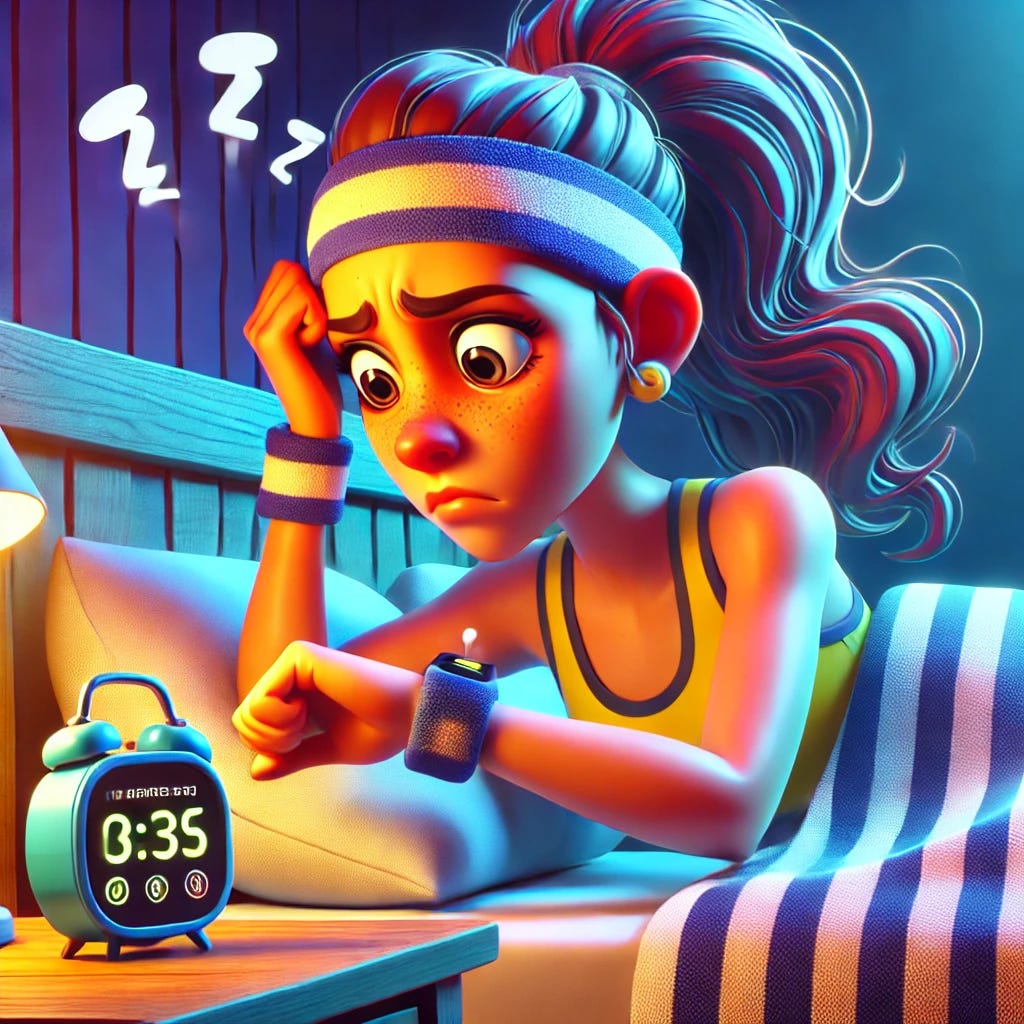Shut Up Garmin, I Slept Great
My love and hate for fitness trackers
Welcome! For those who are new here — I’m Arne, a passionate cyclist and engineer with an interest in AI. I explore how technology, particularly artificial intelligence, is transforming sports—or not—and what it means for athletes, coaches and sport enthusiasts. (P.S. Not everything I write is 100% serious)
“How did you sleep?” “Let me check my Garmin app”. That is as stupid as asking if it’s raining and checking your weather app instead of looking outside. And yet, I check my Garmin App every morning.
I have a Garmin watch and I am wearing it 24/7. When I take it off, pale white skin is revealed as a sign of my commitment to collecting all the data day and night.
What Garmin is to me, a Fitbit, Whoop bracelet, Apple Watch, Oura Ring or Polar is to someone else. The wearable fitness tracker market is booming. The annual growth rate in 2018-2022 was 13.5% and it is projected to continue growing with 10%+ in the coming 10 years. Development of Machine Learning and AI algorithms that analyze all the data collected at our wrists have helped to boost the popularity of health and fitness trackers. But what makes us so data-savvy? And are the data points collected by our fitness trackers actually that meaningful?
Data Addicts
I am a training data addict. The first thing I do after completing a ride is check Strava to analyze my own ride and after I can scroll forever and dive into other people's rides. Last week I was on training camp. One of my teammates asked another about her ride, and I called out the exact time and distance before she could even check. Oops.
But I am not alone, most athletes love to dive into the stats of their training. Ideally, we go beyond just tracking workout stats—we want to quantify the factors that influence training and measure how our bodies respond. That is where the 24/7 fitness wearables come in. More data!
Most modern fitness trackers have sensors to track HR, HRV, SpO2, respiration rate and motion. Out of these HR and HRV are most likely the most popular metrics to track our fitness and recovery. SpO2 can be interesting to track your adaptation to altitude and respiration rate is often included in algorithms that compute our stress and recovery levels. Motion trackers are used for many purposes like steps and movement during sleep.
When Things Get Blurry
More data = better, right? It depends. Research tells us that fitness trackers tend to be fairly accurate during rest and low-intensity levels but lose accuracy when intensity and activity level increases (here and here). This is nothing new. I believe we all know wrist-based HR tracking isn’t the most reliable.
When fitness apps unleash their fancy algorithms on medium-quality data, things get interesting. We’re told we’re overtraining, de-training, peaking or doing too little of A and too much of B. Getting these indications right is super hard, even in the theoretical case where all data is complete and 100% correct. But it makes very little sense when the data behind it is blurred or incomplete. I think we have all opened our wearable app at some point and thought: “Huh, de-training?, I have been killing myself on those HIIT sessions”. Well, you might want to check if your wristwatch even got your HR right on those.
Cut The BS
So why am I still checking my Sleep Metrics every morning? Because I cherry-pick the meaningful data points and ignore the rest. Sleep duration, REM, light and deep sleep. They make zero sense, I can be awake, lying still for an hour waiting to fall asleep, and my Garmin thinks I’m in deep sleep. Vice versa, I can sleep like a rock and my Garmin calls it restless. But what I do find valuable is to check my rest HR and HRV. I know these are accurate when measured at rest. Same for training data, focus on key metrics you trust: power, pace and (accurate) HR data. But don’t get fooled by all the fancy blur.
I slept great Garmin, shut up.




